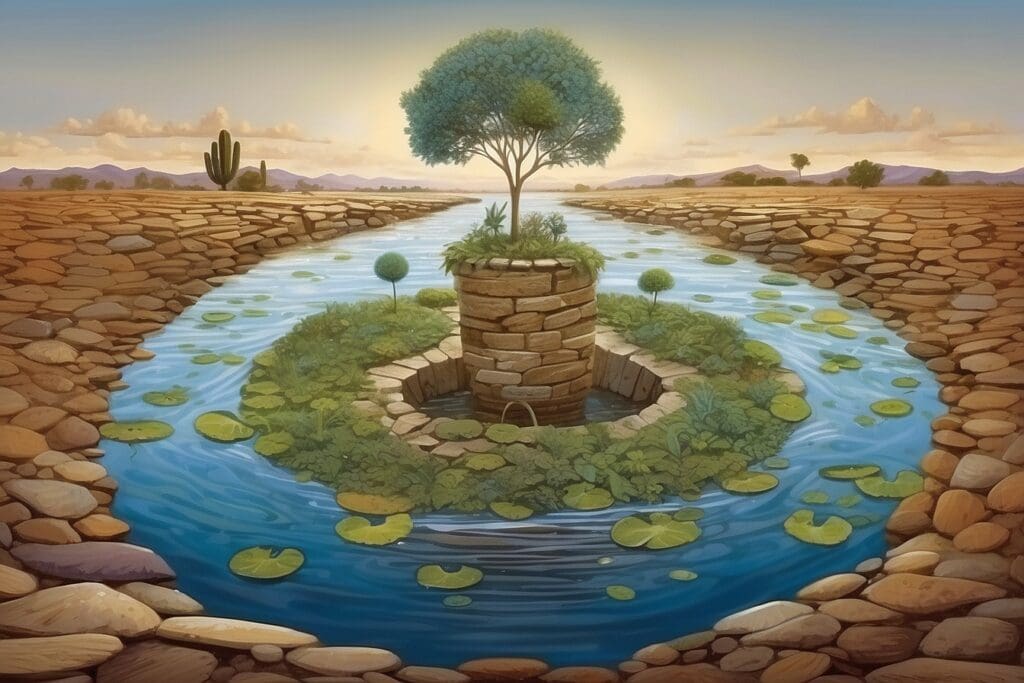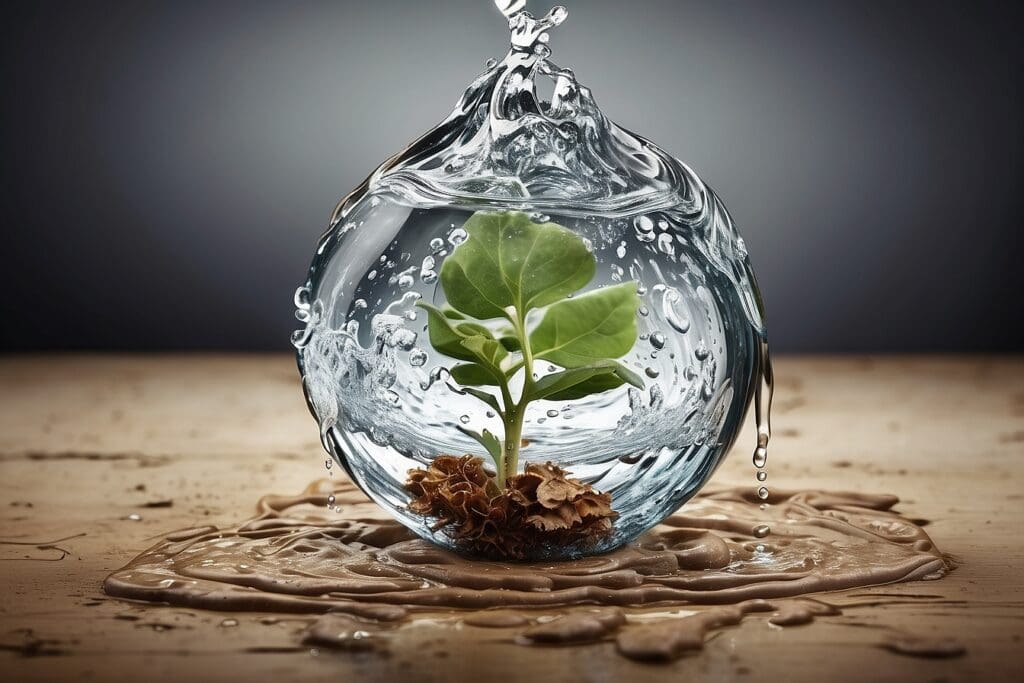Although we might sometimes forget, water is in fact a natural resource, and as such we must manage
and conserve it to prevent the depletion of so crucial a resource. While there is roughly the same amount
of water on earth now as hundreds of thousands of years ago, human beings need accessible, clean,
fresh water. When we speak of conserving water, we speak of conserving water in the right forms and in the right places.
 Water cycles throughout your local waterways, and water treatment centers, and straight into nature. Water cycles throughout your local waterways, and water treatment centers, and straight into nature.For example, some storm drains drain right into nature without any treatment to remove toxins such as paint, oil or cleaning liquids. |
Water cycles, thus if we release pollutedcwater into streams, lakes, or groundwater systems, this harms the eco-systems
surrounding these areas as well as the quality of the water we
can use in the future. If the residents of a region dry up a river or
deplete an aquifer, which is an underground layer of water
bearing rock such as sand, silt or gravel, they cannot be easily
replaced. Only 1% of the earth’s water is even usable at any
given time, as the rest is either saltwater from oceans or ice
from glaciers. In the United States the public use of water tripled
between 1950 and 2000, while the population only doubled.
This expanded use requires increased diligence on our part
so that we don’t run out of usable water in the future.
Where Your Water Comes From
You may wonder where the water that pours out of your tap comes from, and where it goes after it flows down your drain.The answer is that it depends on where you live and how the water system in your area operates. Most cities and regions have websites that offer comprehensive explanations about the water sources, purification processes, and sewage treatment facilities that serve their residents. In the United States, most drinking water in cities comes from surface sources such as lakes, rivers, and reservoirs, although some cities including Tucson in Arizona and part of Queens in New York derive much of their water from aquifers. In rural areas, people often derive drinking water from aquifers below the ground, and in some areas people maintain private wells.
In New York City, residents’ water comes from reservoirs, rivers, and aquifers after purification treatment.
Once used, the water goes to a sewage treatment plant where it is again treated and cleaned. The
treated water, called effluent, is either released into the Hudson River or re-used. In San Francisco,
residents derive much of their water from the snowmelt of the Sierra Mountains. After use, the water is
treated and re-used or released into the bay or ocean. Many cities and counties recycle the effluent for
irrigation and other non-drinking uses in reclamation programs, which help reduce the demand on the
drinkable water supply.
Aquifers provide another source of drinking water. These underground water supplies may be very
large. For example, the Floridan Aquifer, which underlies Florida, parts of Alabama, Georgia, and South
Carolina, is 2,000 feet deep in some areas containing water that has been accumulating for 26,000
years. Conservation remains crucial even for these abundant supplies of pure water. If we use more
water than is replaced, the aquifer faces many risks, even if we are not in danger of completely emptying
the aquifer in the near future. For example, the depletion of the groundwater supply causes wetlands
and springs to dry up and increases the likelihood of sinkholes. This then causes the salt water at the
bottom of the aquifer to mix with the drinkable fresh water, thereby contaminating the water source.
Tucson also relies on an aquifer but this city finds that it cannot meet the water demand. In addition
to conserving and reclaiming water for irrigation, Tucson hopes to increase the available water by
“recharging” the aquifer with water from other sources. Some of this water comes from the Central
Arizona Project infrastructure that carries water from the Colorado River to the city, where it enters
special aquifers to blend with local ground water. These endeavors underline the need for conservation.

Relying on expensive infrastructure and man-made solutions to water shortages may decrease the
reliability and purity of the water we drink. Unless we start being more mindful of our water usage, we
could end up with a substantially lower clean and drinkable water supply. While using water does not
remove it from the earth, resources are required to treat the water before and after use. Increased
water use puts pressure on the sewage treatment plants. The effluent, or wastewater, returned to
oceans and rivers requires time in a natural environment to regain purity. Excess effluent entering
natural bodies of water may create unexpected environmental problems. All of these factors make
conserving water use crucial.While some water conservation strategies, such as water reclamation projects, must take place
through the government, there are many techniques that individuals can implement to save water in
their own homes and gardens. Many water saving tips simply require that you turn off the water when
you are not using it: turn the water off when you brush your teeth, fill a dish tub to do dishes or use a
dishwasher when fully loaded with dishes, take short showers and avoid baths, and fix any leaks in
your home, especially leaky toilets!
If the drain spouts on your house connect to the sewer system, you can try disconnecting them and
redirecting the water into lawns and gardens, being careful to ensure that the water goes to a location
such as a garden where it can be put to use. You may want to contact your city administrators in order
to determine whether projects like these are appropriate in your area.
 Turning the water off while you take time to lather and scrub your hands Turning the water off while you take time to lather and scrub your handsis one small act that helps conserve water. |
Water Conservation
Steps That Individuals Can TakeSome water saving methods are slightly more involved but remain doable. You can install water
saving toilets, faucets, and shower heads. If replacing the toilet is not feasible, place a plastic bottle
or bag filled with water in the toilet tank. Keep water cold in a pitcher in your fridge rather than running
the faucet to wait for cold water, and catch water for plants when waiting for the tap water to cool or
warm. Watering your lawn very early in the morning or later in the evening will help it retain moisture
longer, as will adding compost to your garden.Water is also used extensively in manufacture and agriculture, thus reducing overall consumption, reusing materials when possible, purchasing fresh food and cooking at home rather than relying on processed and pre-packaged food will reduce water use worldwide. Check out http://www.wordpress-837916-4114959.cloudwaysapps.com/GreeniacsLinks/Water.





